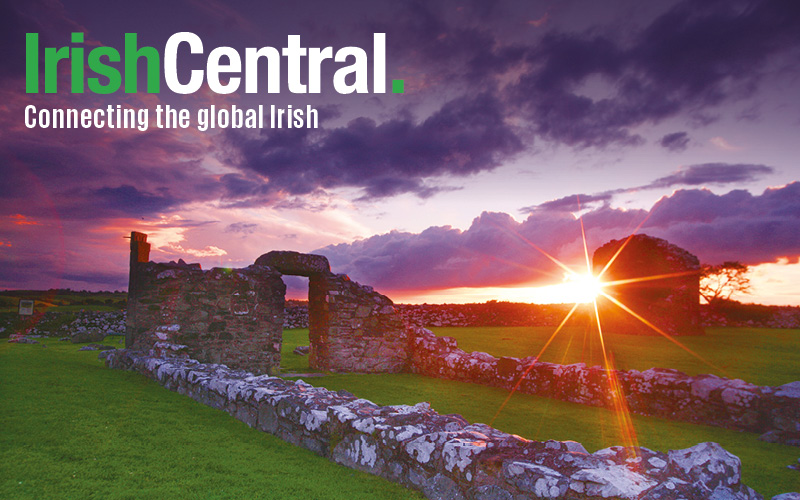Irish history is a constant reminder of how both amazing and modest we Irish actually are.
While researching for my new book, “Poet Madman Scoundrel 189 Unusual Irish Lives”, I was astonished at how at least one Irish person managed to turn up at every significant historical event practically anywhere in the world.
For a tiny country with a small population, we have managed a global representation. But our ancestors were modest because they lived before celebrity was invented so their successes, and failures, are often neglected. In this year of the Gathering, we should carry out a world audit of all the places we have been and events in which we participated.
For example, we Irish discovered America. Here in Ireland we quietly accept that Brother Festivus was on the beach in Miami in the sixth century to greet Saint Brendan (484-577) when he eventually showed up after his adventurous voyages across the Atlantic from Ireland.
A thousand years later Columbus picked up an Irish man in Galway on his way west, on the basis that he had better take along someone who knew the way. Even though that same anonymous chap was first off the Santa Maria, he allowed Columbus to take the credit. But we haven’t just sent our saints to America.
Mary Ann Duignan (1871-1929) left Longford for Chicago to pursue her ambition to become the most successful prostitute, ever (we might wonder how such a status is measured: number of clients or gross income).
Following a life of crime and adventure across North America and Europe that saw her doing time with Constance Markievicz (1868-1927), breaking one boyfriend out of the notorious French Devil’s Island prison and attempting to gun down another, she eventually achieved her ambition.
We were involved in the American revolution on both sides. Wolfe Tone (1763-1798) was allowed to emigrate to America to avoid getting into revolutionary trouble in Dublin. Though he bought a farm in Pennsylvania, he didn’t like America. However, after his death in Ireland in 1798 his grief stricken family returned to the farm where they soon settled in and learned to enjoy life, a lot.
Fellow revolutionary Lord Edward Fitzgerald (1763-1798) sailed from Cork to South Carolina in 1781 to fight against the American revolutionaries (this was before he discovered the virtues of rebelling for himself). As a typical Irish man he had lots of charm. He proved to be such a charismatic and loveable soldier that the American revolutionaries were practically queuing up to surrender to him. A South Carolina slave called Tony Small nursed Fitzgerald back to health after he was severely wounded and left for dead in a fight. Fitzgerald and Small travelled together across the entire of North America from Canada, down the Mississippi, and into New Orleans. Along the way, Joseph Brant, the Irish-Indian Mohawk leader inducted Fitzgerald into the Seneca nation of the Iroquois League.
We also ran South America for a while for the Spanish and then helped to kick them out. In Chile and Peru Ambrose Higgins (1720-1801) worked his way up from humble clerk to become Viceroy of Peru, the most prestigious post in the Spanish Empire. Though he was politically progressive, he was known locally as “The Shrimp” because of his short stature and red complexion, which usually became redder when he thought about his son, Bernardo, who eventually earned the title “Liberator of Chile” by fighting with Bolivar for the liberation of South America from his father’s regime. Cork man, Daniel Florence O’Leary (c1802-1854) later joined Bernardo and Bolivar in the struggle for independence from Spain. Not all the Irish in South America were fighters. Cork woman Eliza Lynch (1834-1886) was a lover: specifically the lover of Francisco Solano Lopez who was a dictator of Paraguay.
Their rule together was so controversial that Paraguay’s neighbours invaded resulting in a massacre of the population. Lopez was killed and Lynch thrown out but not before she, definitely maybe, buried a vast treasure somewhere in the Paraguayan jungle that remains lost to this day.
In sports, the Irish have provided many of America’s best boxers, Olympic athletes, and sporting traditions. For example, Tipperary man, Matt McGrath threatened to hospitalise the American team flag carrier at the 1908 Olympics if he dipped the American flag as he passed the royal box. This threat gave rise to the tradition that the American flag is never dipped at an Olympic ceremony. The Olympic gold medal winning hammer thrower, Pat O’Callaghan (1905-1991) could have been Tarzan when he visited Hollywood after his Olympic win. But with typical modesty, he turned it down, allowing Johnny Weissmuller to get the role.
Surprisingly, our impact on America hasn’t been all good. Mary Mallon (1869-1938) brought typhoid to New York, infecting many of those who came into contact with her, earning her the name “Typhoid Mary”, and not because of her contributions to a cure but because of her role in improving our understanding of the transmission of that disease. Mary had a life-long aversion to washing her hands and hygiene in general.
The list of Irish turning up around the world is endless. We are found at the North and South Poles, from Seattle to Moscow. Just squint your eyes when looking at the 1969 moon-landing photos, fake or not, and you just might see a guy in a green astronaut suit standing behind Neil Armstrong. These are just a few of the 189 unusual Irish lives that I have written about. Check if you have any unusual ancestors hidden in the musty attic of Irish history.
Visit David Slattery’s Facebook page for more.
Twitter - @ByDavidSlattery
** David Slattery is a full-time writer and an Associate Fellow at the Graduate School of Creative Arts and Media at The National College of Art and Design in Dublin.




Comments